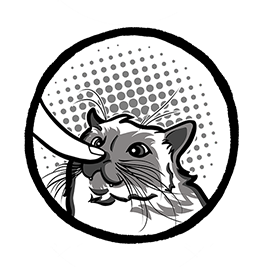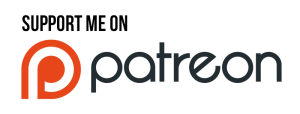Social Content as Catalyst
There is an unfortunate misconception around the role of social content in community management. Community management is just creating social content, right? That is, posting animated GIFs, memes, and weird internet in-jokes to the social media channels, correct?
NOPE.
Throwing social content out into the void will not build a community. While that joke you posted on Twitter might be hilarious, it’s all for naught if it fails to resonate with your audience. It’s not the silly GIF that really matters at the end of the day, it’s the response it elicits from your community. Building great communities requires the active engagement from your audience.
Your social content is the catalyst.
Social Content as Catalyst
Your social content is the beginning of the conversation. If you treat your social channels solely as a digital billboard, you have a digital advertising channel, not a community. You are unlikely to build long-term relationships this way, and miss the opportunity to gain valuable insight from your customers as a result.
The best social content acts as a catalyst. The catalyst for what, you might ask?
Connection
Social media is just that, social. At its core, it is a tool for building relationships. Be it between individuals, or between individuals and larger entities such a brands. If you’re looking to build a great community, your social content should reflect that and strive to connect with your audience as a primary objective.
This can be terrifying, as it requires a certain level of vulnerability. It’s easy to throw up link after link about your product or successes. It is much harder to peel back the layer of Brand (TM) and show the real, human side of your business. To build memorable relationships, you need to be human and remember that not every post is a sales pitch. In fact, very few of your social content posts should be focused on a sales pitch.
Think about how you respond to interactions in real life. If your new friend that works for a car dealership spends every conversation trying to sell you the newest model, are you likely to remain friends for long? They might be a pretty cool person, but if your only interactions with them are based around a sales pitch, they’re not really trying to be your friend. Make sure you’re not being that person on social media.
Be human, be genuine, and make a real effort to show that you care about your community. Make a regular effort to respond to comments as a real person. Be interested in what people have to say, even if it’s not related to your brand. Spend time liking comments, favoriting tweets, and interacting with your fans. Even if you’re not able to respond to everyone, making an effort is noticed and goes a long way to establishing yourself as someone who cares about more than just the bottom line. And when it comes to your long-term advocates, genuine relationships are critical.
And as always, remember to say thank you!
Action
Your social content can spur action on the part of your community members. Need them to vote for you in a poll? Ask them! If you’ve built a great relationship with your fans, they’re more likely to take the time to do something on your behalf. Your top advocates may even go one further, and champion your requests on their own channels.
Need your community to stress test a new feature? Ask them to jump into the app and give it a go!
Want them to check out your new blog post and leave a comment? You guessed it, ask them!
Posting a link to a piece of content is good. Posting a link to a piece of content and asking for their thoughts, better!
Improvement
As a customer focused brand, you should always be looking for ways to improve the customer experience. A healthy community will proactively provide you with feedback on what you could improve. Creating social content that reinforces your desire for feedback, and shows you’re actively responding to it goes a long way to building trust. While you won’t be able to action on every piece of feedback, showing that you listen, care, and react is immensely valuable to your community efforts.
Release a new update that addresses a critical bug that community members alerted you to? Thank your community for their feedback in the release post! A colorblind player takes the time to write you a personal letter describing their experience and how it could be improved? Thank them personally when you release better colorblind options!
Once your product is released into the wild, it ceases to be wholly yours as the creator. Showing that you’re willing to listen to constructive criticism and actively improve the product is huge. Communication is a two-way street, and being able to demonstrate that you actively listen and respond not only encourages a great community, but can result in a better product.
Encouraging Word of Mouth
If your social content is compelling, you will naturally attract new community members. While community is focused on retention, a positive community can lead to some wonderful word of mouth. A positive community is a one that fans will eagerly recommend to others.
Eat24 is one of those brands on Twitter that attracts new followers through sheer entertainment value. While they have a loose focus of ‘food’, the majority of their content falls under the realm of ‘fun for fun sake’. I haven’t lived in the US for over 3 years now at this point, but still follow their account. I can’t use their services, but they are consistently fun and engage in conversations with me on Twitter. As a result, I continue to interact, RT their posts, and happily act as an advocate for their brand.
Exhibit A:
@kindofstrange @JustinFlitter We…we don’t know what to say. <3 <3 <3 pic.twitter.com/BxT5Aw18VS
— Yelp Eat24 (@Eat24) May 31, 2016
If people love what you do, they will share it with others. Give them a reason to sing your praises, acknowledge their efforts, and always be thankful for their support.
Closing
At the end of the day, creating social content is one small part of what a Community Manager does. At the core of their efforts, Community Managers are relationship managers. And as with any relationship, building and maintaining those connections takes time and effort. If your effort ends at ‘I posted this thing’, you’re setting yourself up for failure.
Instead of thinking of your social content as the end product, try thinking of it as the beginning of the conversation. What makes someone want to interact and engage with you? How does your social content support those efforts? What purpose does it serve in building or maintaining the relationship with your audience?
If you’re keeping these things in mind, you’re already off to a great start!
Related: The 3 Questions to Ask When Creating Content
Support Me
Dig this piece and want to see more in the future? Consider backing me on Patreon!
Already supporting me? May the sweetest of high-fives grace your palm!










One Comment on “Social Content as Catalyst”